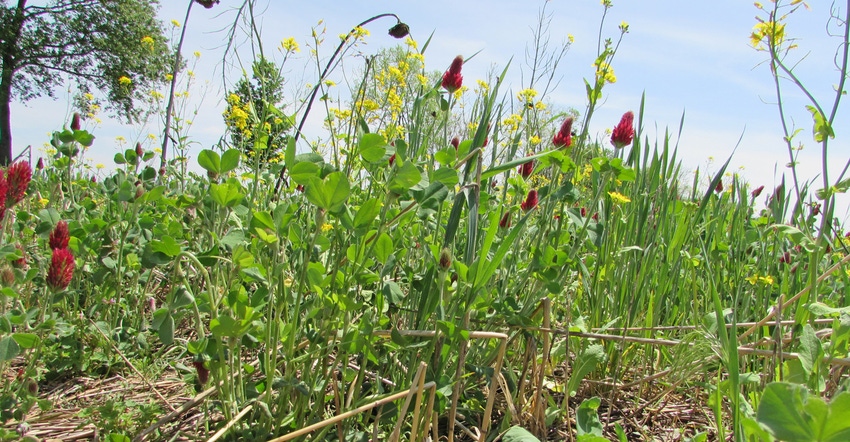July 11, 2022

What is bringing farmers back to wheat? Some original reasons are still valid. It provides an opportunity to install tile or grassed waterways. Farmers are also bringing wheat back into the rotation to add a different cash crop and plant a summer cover crop while increasing diversity. Since the price of wheat has risen considerably, economically, it’s much more attractive than during the last few years.
Here’s the big question for most farmers: After wheat, should you double-crop soybeans, leave the field fallow or plant a cover crop?
Northern Indiana faces many challenges trying to double-crop soybeans. The remaining growing season is just too short to get good yield. Wheat fields left fallow are an invitation for weeds to take over. Post wheat harvest is a time when farmers can plant cover crops and take advantage of the remaining growing season to improve their soil.
Typically, wheat harvest ranges from early to mid-July in northern Indiana, giving a farmer plenty of time to plant a cover crop mix that includes both warm- and cool-season species.
Why both? Summer annuals such as sorghum sudangrass, sunflowers and Sunn hemp build above- and belowground biomass quickly. Cool-season species such as cereal rye, radishes and clovers maximize root growth after frost, and overwintering species keep a living root growing in the soil until next spring, feeding soil biology.
Cover crops vs. double-crop soybeans
In southern Indiana, the opportunity for extra income from double cropping soybeans is appealing to many farmers. The traditional mindset is that getting two crops off the same acre in one year can reduce the per-acre overhead spread for both crops.
However, research seems to indicate there is more overall value to planting a cover crop compared to double-crop beans. Corn following a cover crop after wheat has the potential of 5 to 20 bushels per acre of increased yield.
Using summer annual species as a cover crop after wheat harvest can provide many benefits. These species tend to do well during the dry heat of late summer. If the goal is also to have a living root all winter, delay planting your cover crop until into August, when cool-season cover crops can survive. Or consider planting two cover crop mixes — a summer and a fall mix — on the field.
Species that could be included in a fall mix include oats, cereal rye, winter pea, crimson clover, daikon radish, rapeseed and hairy vetch. Many of these species will grow through the winter, building biomass and cycling nitrogen for the spring corn crop.
If you have livestock, the value of added forage in the late summer or early fall might be higher than the value of double-crop beans. When grazing cover crops, not only do you get fertilizer spread across the field in the form of manure, but the biology in the manure can help jump-start soil biology. This jump-start will improve nutrient cycling and organic matter levels, while livestock are getting a diverse and nutritious diet, and pastures get some rest to promote good regrowth.
Donovan and Kautz are district conservationists with the Natural Resources Conservation Service. They write on behalf of the Indiana Conservation Partnership.
You May Also Like




